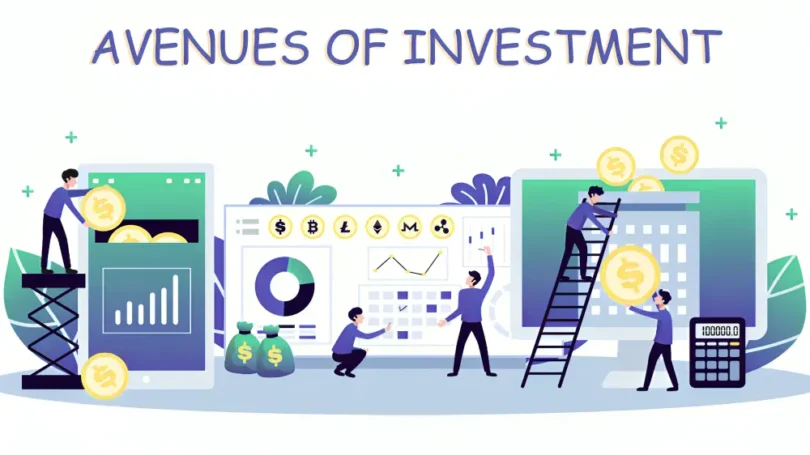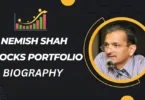Finding profitable investment opportunities is more important than ever in a time of changing market dynamics and economic uncertainty. Experienced and inexperienced investors alike are always searching for opportunities that offer growth, stability, and appealing returns. This article examines several types of Avenues of Investment In India in 2024.
Why Should You Invest Money?
Some people don’t invest; they rely on saving. Savings, however, might not be sufficient to ensure ongoing financial security in a dynamic world. It might not be useful to have idle cash in bank accounts or lockers. The capital appreciation of investments may help them outpace inflation. The ability to compound money is another tool for wealth creation. Investing also helps you reach long-term objectives like buying a home, taking a trip abroad, or saving for retirement.
Avenues of Investment Types
- National Pension Scheme: NPS is an Indian government-funded pension scheme for the elderly. Over time, a nest egg can grow through steady investment. It will give you a steady source of income when you get to retirement age. An investor is permitted to take money out of their savings account once they turn 65.
- Non-Marketable Securities: These are securities that are not buyable and therefore cannot be sold on the open market. Two products that offer this kind of protection are bank savings accounts and life insurance. You can deposit money in any kind of establishment, including a bank, post office, company, surety company, etc.
- Public Provident Fund: With a lock-in period of 15 years, the PPF is a long-term savings plan backed by the government. Even though PPF investments are safe and tax deductible, most people don’t think they’re the best choice for them. Most people anticipate that the government will change the PPF interest rate at least once every three months. From their PPF account, certain investors might also be able to take out loans and take out cash.
- Recurring Deposits: Fixed-rate bonds (FDs) and recurring deposits (RDs) are two examples of investment vehicles that allow individuals to set aside a specific amount of money each month. With your bank, you might occasionally be able to arrange an automatic monthly deposit for a predetermined amount of time. Investing in RDs, like FDs, is risk-free and ensures a profit.
- Bonds or Debentures: Bonds and debentures that pay a fixed amount each month based on the interest rate are available to those looking to invest for the long term. Compared to other options, they are thought to be less dangerous. The issuer sets the level of risk associated with bonds and debentures. Federal and state government bonds, as well as bonds issued by the public sector, fall under this category.
- Employee Provident Fund: Only salaried employees and their dependents are eligible to participate in the Employee Provident Fund (EPF). Workers receive a savings account, which they fund with a portion of their pay each month. Their employers then match the funds, dollar for dollar. At the time of maturity, withdrawals from EPFs are tax-free according to Section 80C of the 1961 Income Tax Act.
- Fixed Deposits: One of the safest and most traditional investment options for people looking to make money in India is a government-guaranteed fixed-income investment in a bank. People who open savings accounts and those who open checking accounts are two different people.
They will charge you a fixed interest rate on the principal for a predetermined amount of time if you borrow money from them. Bank certificates of deposit yield higher interest rates than savings accounts, but savings accounts still yield higher returns than money in savings accounts. Earned interest is therefore included in taxable income and subject to the appropriate rate of taxation.
Where to Invest Money?
No investment strategy works for everyone. The ideal portfolio for each investor will vary depending on several variables, including risk tolerance, goals, age, and investment horizon. When you’re young, you might be more willing to take risks. Consequently, buying stocks and mutual funds may be a wise choice. Older investors have lower risk tolerance, so they can put their money into safer investments like fixed deposits.
Low-risk investments are a better choice because shorter investment horizons decrease one’s capacity for taking on risk. Greater flexibility in investing in stocks and waiting for returns is possible with longer time horizons. Goal type also matters because certain goals, like education, are non-negotiable and require more careful investment. The investor’s choice of investments may also be influenced by a few other variables, such as their disposable income, debt load, and obligations to their dependents.
How to invest money?
Making a strategy is the first step towards investing. Establish clear investment objectives, including timetables and risk tolerance. Look for paths that will enable you to fulfill these objectives. Make sure you do enough research before investing. To spread out the risk in your investments, diversify them, think about the tax implications, and schedule regular reviews.
Conclusion
Avenues of Investment, A strategic approach is necessary to navigate India’s investment landscape in 2024 given the country’s economic uncertainties. A variety of options are highlighted in this article, including the Employee Provident Fund, Non-Marketable Securities, Public Provident Fund, Recurring Deposits, Bonds, and Fixed Deposits. To create a customized portfolio, it is essential to comprehend risk tolerance, financial objectives, and investment horizons. In this constantly changing financial landscape, the significance of thorough research, diversification, tax considerations, and regular reviews is emphasized as ways to maximize returns and minimize risks.








Leave a Comment